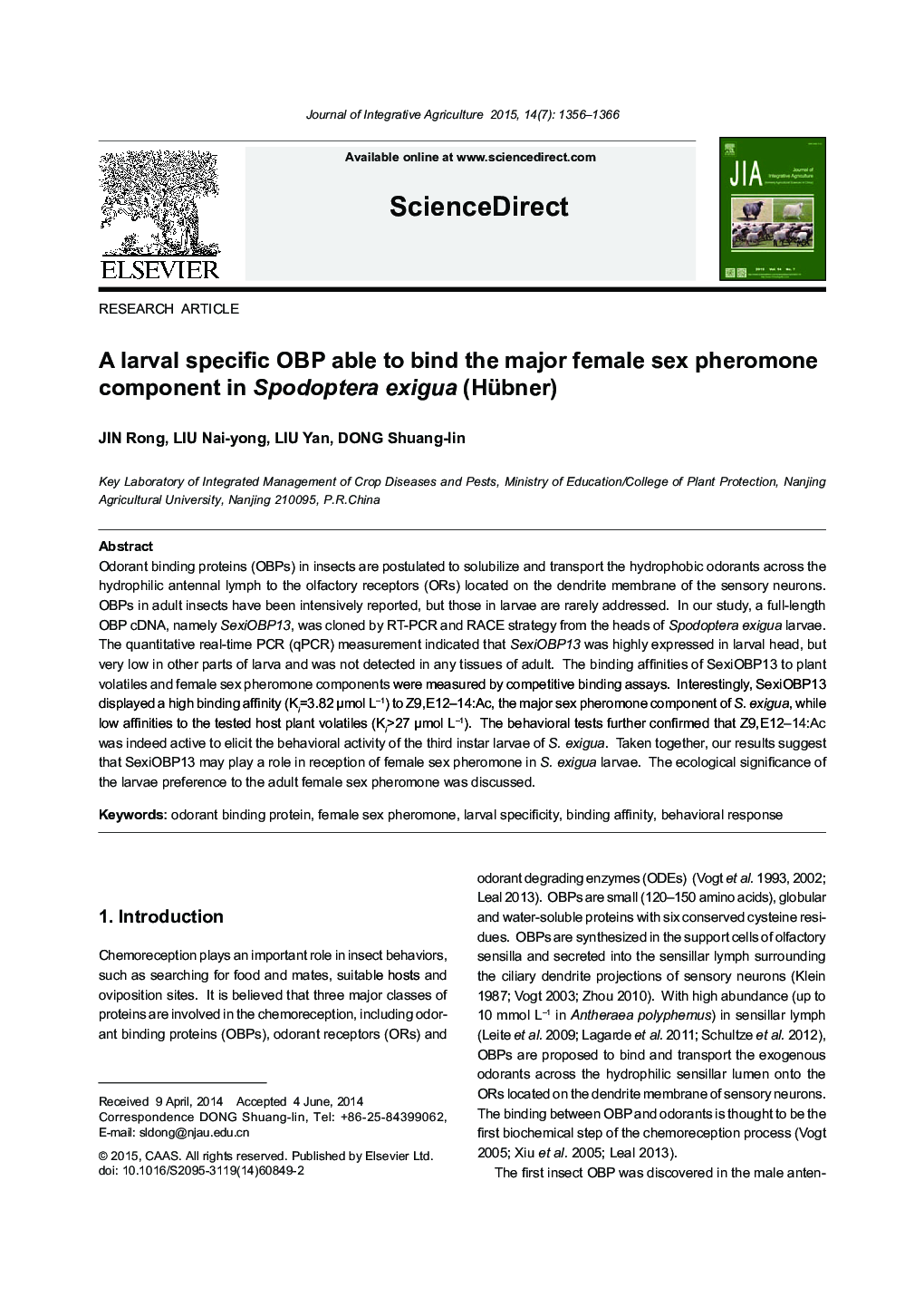| Article ID | Journal | Published Year | Pages | File Type |
|---|---|---|---|---|
| 4494313 | Journal of Integrative Agriculture | 2015 | 11 Pages |
Odorant binding proteins (OBPs) in insects are postulated to solubilize and transport the hydrophobic odorants across the hydrophilic antennal lymph to the olfactory receptors (ORs) located on the dendrite membrane of the sensory neurons. OBPs in adult insects have been intensively reported, but those in larvae are rarely addressed. In our study, a full-length OBP cDNA, namely SexiOBP13, was cloned by RT-PCR and RACE strategy from the heads of Spodoptera exigua larvae. The quantitative real-time PCR (qPCR) measurement indicated that SexiOBP13 was highly expressed in larval head, but very low in other parts of larva and was not detected in any tissues of adult. The binding affinities of SexiOBP13 to plant volatiles and female sex pheromone components were measured by competitive binding assays. Interestingly, SexiOBP13 displayed a high binding affinity (Ki=3.82 μmol L−1) to Z9,E12–14:Ac, the major sex pheromone component of S. exigua, while low affinities to the tested host plant volatiles (Ki>27 μmol L−1). The behavioral tests further confirmed that Z9,E12–14:Ac was indeed active to elicit the behavioral activity of the third instar larvae of S. exigua. Taken together, our results suggest that SexiOBP13 may play a role in reception of female sex pheromone in S. exigua larvae. The ecological significance of the larvae preference to the adult female sex pheromone was discussed.
